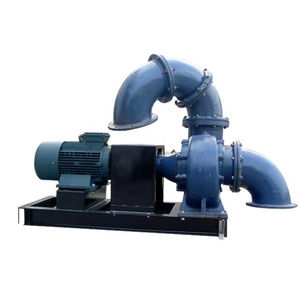Understanding Irrigation Pump Size
Choosing the right irrigation pump size is crucial for ensuring efficient water delivery to crops, gardens, or landscapes. Irrigation pumps play a significant role in maintaining healthy plant growth, and understanding how to select the appropriate size can greatly enhance your watering system's performance. The size of an irrigation pump is determined by various factors such as the area to be irrigated, the elevation of the water source, and the required flow rate.
Types of Irrigation Pumps and Their Sizes
There are various types of irrigation pumps available, each serving different purposes, correctly sized for their applications:
- Centrifugal Pumps: These are widely used due to their ability to handle large volumes of water and can be found in different sizes tailored for different agricultural setups.
- Submersible Pumps: Ideal for deep water sources, submersible pumps are available in sizes that suit both small gardens and large agricultural fields.
- Jet Pumps: Common in smaller installations, jet pumps are compact and can be sized appropriately for backyard irrigation systems.
- Surface Pumps: These pumps are effective for shallow water sources and come in multiple sizes designed for various flow rates and pressure requirements.
Applications of Various Irrigation Pump Sizes
Different irrigation pump sizes are designed for specific applications, ensuring efficiency and performance in water management practices:
- Commercial Farming: Large-scale farms often require pumps ranging from 5 to 20 horsepower, sized to deliver substantial water flow for extensive irrigation systems.
- Residential Gardens: For gardens and smaller lawns, irrigation pumps sized between 0.5 to 3 horsepower are usually sufficient, providing the right flow rate for residential irrigation.
- Landscaping Projects: Landscape designers often choose medium-sized pumps that offer flexibility in flow rate, ensuring beautiful irrigation coverage throughout the project.
- Hydroponics Systems: Specialized pump sizes are required for hydroponic setups, where precision and efficiency are key for plant health.
Choosing the Right Irrigation Pump Size
Selecting the right irrigation pump size involves understanding your specific needs and the requirements of your watering system:
- Determine Water Requirements: Calculate the amount of water needed based on your landscape or crop area and the type of plants you are growing.
- Assess Elevation Changes: Consider any elevation changes that may affect water flow, which influences the size and power of the pump needed.
- Factor in Flow Rate: Identify the desired flow rate in gallons per minute (GPM) based on your irrigation system design and its components.
- Evaluate Pump Efficiency: Choose a pump that not only fits size criteria but also promotes energy efficiency, saving costs in the long run.
Conclusion: The Importance of Proper Irrigation Pump Size
Selecting the appropriate irrigation pump size is not only about ensuring a continuous water supply but also about enhancing the performance of your irrigation system. By understanding the types of pumps available, their applications, and the critical factors for choosing, you can optimize your water management practices effectively. Remember that investing time in determining your irrigation needs can lead to greater agricultural productivity and healthier landscapes.























































